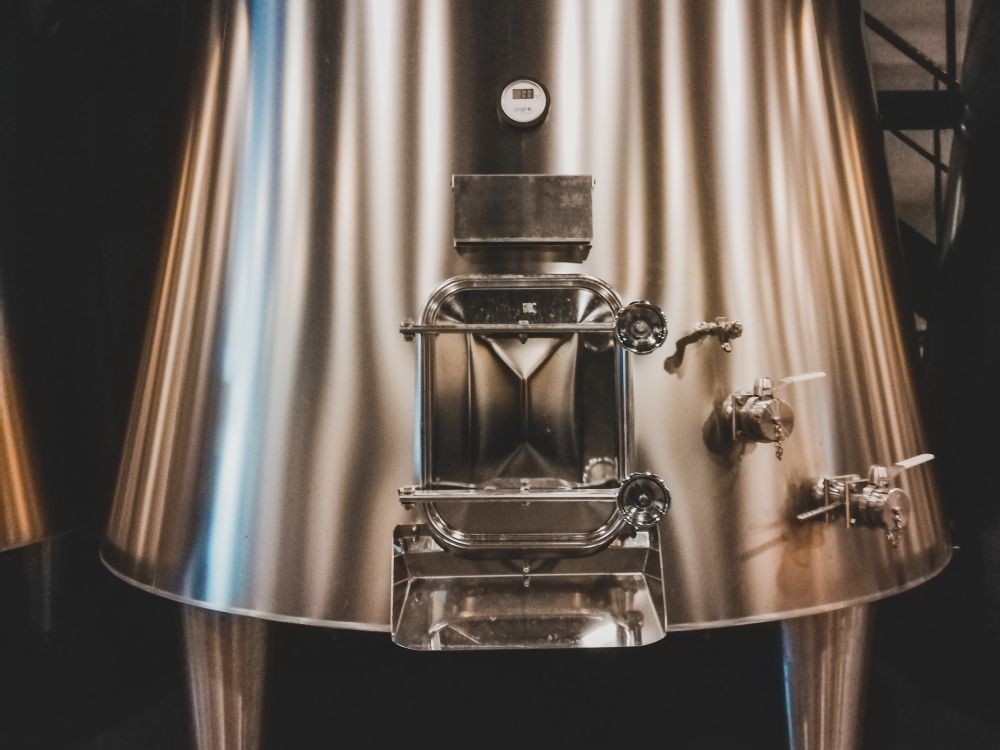Stainless steel tank manways are an important part of many industries – from food to pharmaceuticals and many others. Manway structures, as well as the materials they are made of, are created with longevity in mind. However, it is important to remember that regular maintenance is the key to keeping manways in good condition.
Below we discuss the importance of regular maintenance of stainless steel tank manways and provide some tips on how to keep them in the best possible shape for a long time.

An industrial tank or chamber is usually a sealed, enclosed structure. Often, a manway installed to cover the inspection opening of such a tank is the only way to access its interior. This opening allows technical services to not only fix any faults, but also facilitates ongoing inspection, cleaning or even emptying the inside of the tank. As a key component of the tank, a stainless steel manway should therefore always be in good working order.
However, the importance of tank manway maintenance does not end there. As a permanently attached (usually: welded) component to the surface of the tank, a stainless steel manway is a part that requires considerable time and money to replace. Although the frame and manway cover are physically separate parts on most models, they are closely related dimensionally and structurally. Thus, it is a good practice to initially purchase manways with a set of spare parts (cover, handwheels, gasket) to offset the possible downtime of the unit in case of wear or damage to one of the manway components.
The tank manway as a structure composed of several elements requires ongoing inspection of the technical condition of each of them. Below we describe the various components of the manway, the characteristic problems associated with their operation, and tips on how to protect against wear and tear.
The gasket is a key part of any tank manway. Its primary task is to ensure the tightness of the closing and to separate the medium in the tank from the external environment.
The basis for the longevity of a manway gasket is its proper selection for a particular application. Gaskets for tank manways are manufactured from various materials, such as: EPDM, silicone, NBR, Viton, neoprene, and sometimes PTFE. When selecting a gasket, two important parameters should be taken into account, namely:
Only a gasket that will meet the parameters of chemical and temperature resistance has a chance to last a long time. However, this does not change the fact that the gasket is the part of the manway most prone to wear and tear – thus, you should be prepared to replace this component regularly.
A fundamental issue in the context of gasket replacement is the identification of the manway model. The number of profile types and gasket dimensions is extremely wide, and each model has a specific gasket design typical of its construction. Therefore, it is necessary to prepare and maintain the technical documentation of the tank, including the model of the manway that was installed in it. Many times this is the easiest way to identify a particular manway model in order to purchase replacement parts. Indeed, often the markings on the surfaces of manways (in particular lightweight, non-pressure covers) are limited only to the grade of steel from which they are made.
For manways installed in process-critical tanks, the recommended practice is to purchase an additional (spare) set of gaskets to avoid unwanted downtime caused by a leaking inspection opening.
The vast majority of manways are equipped with a cover closing using handwheels. It is the manway handwheels that are responsible for the proper pressure on the cover and frame – so they also play an important role in the tightness of the closing and must be inspected on a regular basis.
As with gaskets, handwheels are manufactured from a variety of materials, and the correct selection for the application determines their service life. The most common manway handwheel materials are:
When selecting a handwheel for an application, it is important to keep in mind the characteristics of the medium with which the manway will come into contact, as well as the operating temperature. For undemanding installations operating at temperatures up to about 50-70°C, handwheels made of standard plastic are acceptable. For aggressive media and high-temperature applications, it becomes necessary to use more resistant stainless steel handwheels.
The condition of manway handwheels should be inspected regularly – in particular for pressure manways. Failure to apply sufficient pressure to even one of several (or more than a dozen) pressure manway handwheels can adversely affect the even distribution of structural stresses, resulting in inadequate manway leakage.
Care of the manway frame and cover is important. A frequently used inspection opening is exposed to mechanical damage, which can occur, for example:
Deep scratches on the surface of the cover or manway frame, depending on the aggressiveness of the medium in the tank, can become the seed of corrosion. A similar fate can also befall the place where the manway frame joins the tank surface if it is not welded correctly or carelessly. It is therefore recommended that deep scratches on frames and covers, as well as areas of welds made, be subjected to thorough smoothing or polishing to avoid potential future inconveniences.
A well-maintained tank manway can last for many years. Systematic monitoring of the manway's condition and ongoing repairs can prevent potential (and costly) problems in the future. To avoid them, it is also a good idea to stick to simple, common-sense but often ignored rules:
We use cookies